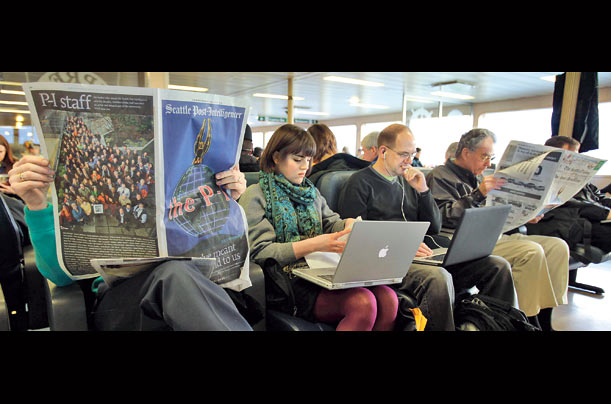
Newspapers used to die all the time, and nobody thought a thing about it because other newspapers were being born. The law of the jungle is brutal but not particularly sad. Somewhere around the time television got big, though, the newspaper birthrate fell close to zero; after that, every death was one step closer to extinction. You see the difference in the history of the Seattle Post-Intelligencer. Its 146-year life span is a tale of dead start-ups, relaunches, mergers, fierce competition — all bloody and robust and healthy. Now the P-I is gone but for a skeleton crew of Web producers and opinion writers, and there won't be another paper along to replace it. With the Seattle Times also struggling, Seattle could become one of the first major cities to go newspaperless.
Declining readership is normally blamed, but that's not quite it. Newspapers still attract readers — more than 400,000 each Sunday in Seattle when the P-I died March 17. That's more in one town than most cable-news shows draw nationwide.
But large audiences won't save an ecosystem in which costs are high and advertising has plunged. Tiny audiences are fine for cable because you don't need much more than a desk, a loudmouth host and a camera — the guests show up for free, lured by the bewitching red light that signals ON THE AIR. For online news, you don't even need the guests or the camera. A paper, by contrast, has presses and trucks and lifestyle reporters; comic strips, critics and recipes; the DIY column, beat writers, the sports pages, an investigative team, the statehouse bureau, a squad of chin strokers on the editorial board and that older fellow who writes a "light" column that hasn't been funny for years. That's a lot of overhead.
The business was a gas while it lasted, but that's a topic for the press-club bar. Instead, consider this: every time a news source dies and an online opinion site rises up, we move a little closer to the fact-starved day when the loudmouths have only themselves to talk about.